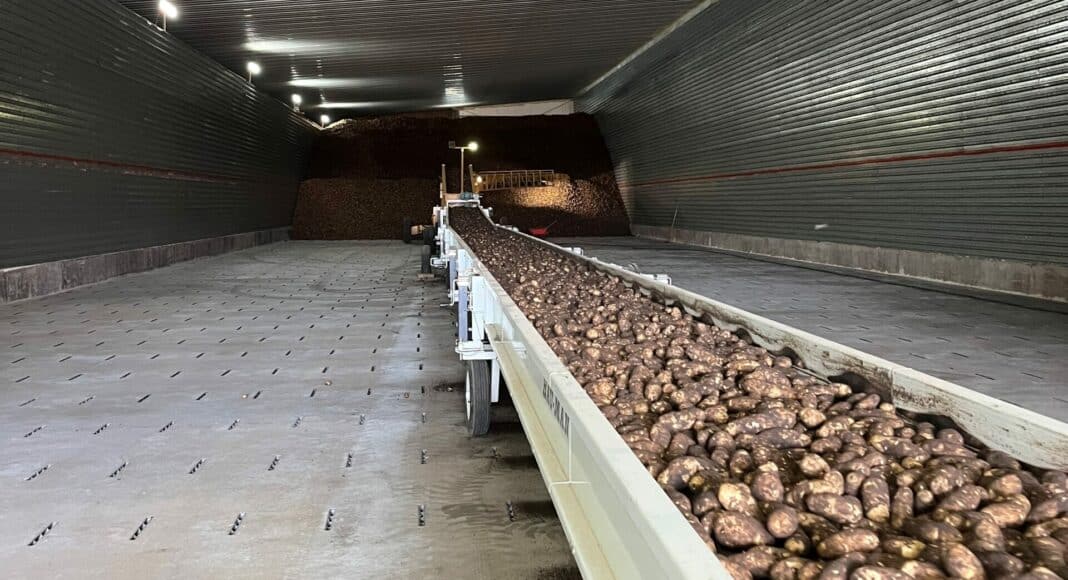Relative Humidity (RH) is arguably potato storage’s most critical concept: a necessary component of storage that growers can directly control. However, it’s poorly understood by many – maybe most – producers. Think you know RH? A quick recap on its most important details could save you significant losses this year.
RH is a description of air moisture. Specifically, it’s the amount of water vapour present in the air compared to the maximum amount of water vapor the air could hold at that same temperature and pressure (ie: 60% per cent RH means the air holds 60 per cent of the maximum possible amount of moisture air at that temperature and pressure has the capacity to hold).
As air is heated, its ability to hold water increases. This means that, if the same amount of water is held in warm air and cold air, the cold air will measure higher RH. If air is heated and no moisture is added, RH will drop. Conversely, if air is cooled without removing water, RH will increase until the air isn’t able to hold all the moisture, at which point water will appear as condensation or free moisture.
Potatoes are 80 per cent water. If a storage’s RH is too low (less than 90 per cent), moisture will move from the potato into the air, causing shrink and pressure bruise. On the flip side, high RH (above 95 per cent) promotes rapid curing and the healing of wounds during the early stage of storage, reduces tubers’ water loss and shrink; mitigates pressure bruise, and – here’s the one that’s most often misunderstood – minimizes fungal and bacterial infection, as long as there is not free moisture.
The majority of tubers’ weight loss occurs in the first 30 days of storage, which means ensuring adequate RH in the earliest days of storage is the most critical. Unfortunately, far too many producers don’t add humidity until after (sometimes long after) 30 days, resulting in unnecessary losses and leading to pressure bruise.
A properly designed, well-maintained and well-calibrated humidicell will provide small enough water droplets to readily evaporate into the air stream to increase RH. The air will only pick up the moisture it can hold at that temperature.
The biggest challenge in RH comes when the temperature difference between the plenum airstream and the pile exceeds 1 F to 3 F and/or when a 1 F to 2 F differential between the top and bottom of the pile isn’t maintained.
Suppose RH is 95 per cent in air with a plenum temperature of 45 F, but the temp of the tubers is 48 F. As the cool air comes into contact with the warmer potato (and since no additional water is supplied) the RH will be lower: only 75 per cent, resulting in moisture loss. On the other hand, if the air temperature is 48 F and has an RH of 95 per cent but the tuber temperature is 45 F, the air around the colder tubers will cool and condense (to 46.7 F), leading to free moisture and promoting rot.
The more you know, the better you farm.
Related Articles
Checklist for a Successful Harvest of the Storage Crop











